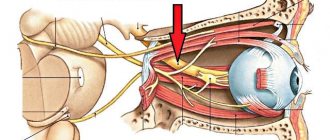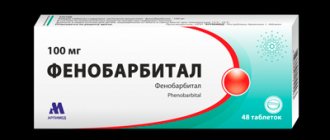A drug from the pharmacological group of laxatives, recommended for all ages due to its mild action, having minimal contraindications - this is a brief description of the drug Duphalac.
Information about how Duphalac works is offered for informational purposes. When planning its use, especially in newborns and infants, as well as in pregnant and lactating women, you should consult your doctor. How does Duphalac work?
The principle of action of the drug
Duphalac is an excellent remedy for normalizing intestinal microflora.
The main active ingredient of the laxative is Lactulose, a carbohydrate consisting of glucose and galactose. It is obtained through deep processing of milk. Lactulose is a substance that stimulates intestinal motility, has a laxative and hypoazotemic effect.
Once in the large intestine, Lactulose is broken down there under the influence of bacteria. The result of this transformation is the formation of organic acids. In the intestine, osmotic pressure increases and pH decreases, ammonium ions are formed.
As a result, the volume of feces increases, the intestinal walls contract more intensely, pushing the contents towards the exit. The structure of feces becomes softer, the process of bowel movement comes into line with physiological rhythms.
A special feature of the drug Duphalac is that it is a prebiotic, normalizing the intestinal microflora and cleansing it of pathogenic microorganisms, that is, it balances the intestinal microbiocenosis. The drug does not have an irritating effect on the intestinal mucosa and smooth muscles of the intestines; it leaves the body through the intestines without being absorbed through its walls.
This medicine does not at all interfere with the absorption of vitamins and other nutrients from food; its principle of action is similar to the action of natural dietary fiber.
Reception features
The auxiliary agent of the drug is only water.
Another feature of all these drugs is the need to wait for the onset of the effect within a day or two.
The specific time is determined individually, it depends on the activity of bacteria populating the intestines. They must destroy the shell of the drugs so that the active substance begins to “work”.
The products mentioned above have one active ingredient - lactulose. However, Dinolak also contains simethicone. This active substance is an indispensable component for increased gas formation.
In what cases is the use of the drug indicated?
Duphalac is used to treat constipation.
The range of application of Duphalac is as follows:
- Constipation
- Salmonellosis
- Putrid intestinal dyspepsia
- Enteritis caused by Salmonella
- Preparing for bowel studies
- The need to soften stool during exacerbation of hemorrhoids
- Condition after colon surgery
The main reason for the widespread use of Duphalac as a laxative is that the drug does not cause addiction to it, that is, after eliminating the cause of constipation, the process of bowel movement occurs naturally.
Irregular bowel movements
It all starts with irregular bowel movements. To understand what irregular stool is, let’s go backwards and define what regular stool is. It is considered normal when bowel movement occurs at least once a day1. According to modern physiology, only 8% of healthy people have stool less than once a day. Thus, 92% of practically healthy people have stool at least once a day1.
The frequency of bowel movements is influenced by the amount of fluid consumed and the type of food. The use of refined, purified, ready-made factory products provides the digestive system with only easy-to-digest substances and little fiber. As a result, bowel movements may become less frequent than usual.
Separately, it is necessary to highlight the problem of irregular bowel movements during pregnancy. Less frequent trips to the toilet may be associated with physiological changes in the body. Hormones that promote a relaxed state of the uterine muscles and maintain pregnancy can cause a decrease in intestinal muscle tone4. In late pregnancy, mechanical compression of the intestine may occur4. Irregular bowel movements may persist after childbirth. Since the work of a woman’s entire body is aimed at bearing and giving birth to a healthy child, other body functions may suffer for the sake of this goal.
How to take Duphalac correctly
Duphalac is taken orally.
Since Duphalac is available in syrup form, the only possible method of administration is oral. It is taken once, at the same time. Since the effect of the drug occurs after a certain time, it is advisable to ensure that during this time you can freely visit the toilet.
The dose is selected individually, depending on age, reason for using the product, and individual characteristics:
- Constipation in adults – 20-45 ml daily dose, 15-30 – maintenance dose.
- Children from 0 to 5 years – 5-10 ml daily dose, 6-14 ml – 10-15 ml – daily dose.
- Preparation for intestinal examination - 100-150 ml once.
- Dysbacteriosis in newborns – 1.5-3 ml per day
- The effect of a single dose of the drug can last for 1-2 days.
Microbes coexist with humans in the form of complex multicomponent communities - biocenoses, and form a unique ecological niche with many mutually beneficial symbiotic relationships. Populations of microorganisms in individual human biotopes have been well studied. At the same time, the most densely populated ecosystem is the intestine, in which about 60% of human microflora is concentrated [1].
The human intestinal microflora is a fairly stable system, genetically determined in many respects. The total number of microbial cells colonizing the human body reaches 1014–1015, i.e. that is, they are 1–3 orders of magnitude larger than the host’s own cells. The upper parts of the small intestine (SI), due to their anatomical features (receptors for the adhesion of predominantly aerobic flora), are slightly populated by bacteria. Normally, the content of microorganisms in this region of the gastrointestinal tract (GIT) fluctuates in the range of 101–104 CFU/ml of intestinal contents. The largest number of bacteria is found in the large intestine. Here their concentration reaches 1010–1011 or more per 1 g of content. The mass of the normal intestinal microflora of an adult is more than 2.5 kg, the number is 1014 CFU (almost 500 biological species), and the total genome of bacteria - the “microbiome” - includes 400 thousand genes, which is 12 times larger than the human genome [2].
Normal flora, according to the nature of metabolism, can be divided into: • saccharolytic (bifidobacteria, lactobacilli, propionobacteria, etc.), fermenting carbohydrates with the release of short-chain fatty acids (SCFA); • proteolytic (Protea, Escherichia, some types of clostridia, fusobacteria, aerobic spore bacilli, etc.), metabolizing proteins and amino acids with the formation of large amounts of ammonia, amines and other toxic substances.
Based on localization in the intestine, the following types of microflora are distinguished: • mucosal – tightly bound by mucin, covering the intestinal epithelium, and is the most important component in the formation of biofilms. Through it, there is a constant exchange of metabolic products and genetic material between normal flora and the host organism; • parietal – loosely connected to the intestinal walls; • luminal – located in the lumen and not connected to the intestinal walls.
The functions of the intestinal microbiota are diverse. They can be divided into several directions: 1. On the surface of the intestinal mucosa, microbiota forms biofilms, which are a kind of barrier to the penetration of pathogenic and conditionally pathogenic microflora and its toxins into the human body. The mucus layer, secretory immunoglobulins and saprophytic flora represent a complete suprapithelial mucous layer that protects the mucous membrane from dehydration of macromolecules, physical and chemical aggression, as well as attacks from microorganisms, bacterial toxins and parasites. The bacteriostatic effect is exerted by low-molecular-weight metabolites of saccharolytic microflora, primarily SCFA (propionic, oily, acetic, formic, milk, etc.), lactate, etc. This effect makes it possible for indigenous microorganisms to populate the corresponding ecological niches. 2. The presence of microorganisms in the gastrointestinal tract stimulates peristalsis of the colon and colon, gastric emptying, and reduces the transit time for their contents. The influence of microorganisms on the motor function of the intestine is based on several mechanisms: the production of microbial prostaglandins by bacteria; changes in the metabolism of bile acids with the predominant accumulation of forms similar to ricinolic acid in castor oil; the production of acetic, propionic and lactic acids, which prevent the proliferation of putrefactive and pathogenic microorganisms. 3. Indigenous microflora plays an extremely important role in the processes of digestion and metabolism. Thanks to the production of various enzymes, intestinal bacteria enhance the hydrolysis of proteins, ferment carbohydrates, saponify fats, prevent microbial decarboxylation of dietary histidine and an increase in the amount of histamine, participate in the synthesis of amino acids, B vitamins, PP, K, biotin, hormones, antibiotics and other substances. A number of studies have provided evidence of amylase and caseinolytic activity of bifidobacteria and lactobacilli, their participation in the metabolism of bile acids and environmental xenobiotics. 4. Gastrointestinal microorganisms interfere with cholesterol metabolism and are the most important metabolic and regulatory system that cooperates with host organs and cells in maintaining normal blood lipid composition. Thus, it has been established that bifidobacteria limit the release of cholesterol from hepatocytes, and some strains of streptococci enhance the catabolism of cholesterol into bile acids. 5. The microbiota of the digestive tract is involved in the regulation of sorption and excretion of such ions and cations as Na, K, Ca, Mg, Zn, Fe, Cu, Mn, P, Cl, etc. 6. The detoxifying ability of indigenous intestinal microflora is quite comparable to that of the liver. These two main detoxification organs of the macroorganism participate in the processes of hepatic-intestinal recycling of various organic and inorganic compounds. The fundamental difference between the metabolism occurring in the intestine is the fact that the reactions of hydrolysis and reduction dominate there, while in the liver - oxidation and synthesis with the formation of water-soluble products. Xenobiotics in the intestine can undergo biotransformation with the formation of non-toxic products and isoforms with accelerated elimination from the body. 7. Bacteria inhabiting the large intestine are involved in the implementation of immunological protective mechanisms, including anti-carcinogenic ones. Intestinal microflora plays an active role in the induction of food tolerance to food allergens, which is based on the balance in the Th1/Th2 system. If there is a shift towards the predominance of gram-positive microorganisms, this is a risk factor for the development of food allergies, since there is no production of lipopolysaccharides (a metabolic product of gram-negative bacteria) responsible for the formation of food tolerance. Another important effect is stimulation of local immunity, primarily due to increased secretion of secretory IgA [3].
There are a number of factors that make it possible to maintain quantitative and species constancy of the microbial landscape of the human intestine: • gene pool; • acidic gastric environment; • normal motor-evacuation function of the gastrointestinal tract; • anatomical sphincters of the gastrointestinal tract; • constant level of intraluminal pH in different biotopes; • the state of the immune system of the mucous membranes; • bactericidal substances produced by mucous membranes (lysozyme, lactoferrin, etc.); • phagocytic activity of macrophages of the mucous membrane; • secretory IgA; • bacterial colicins and microcins (endogenous peptide antibiotics of microbial origin) [4].
The performance of the basic functions of normal intestinal microflora can be disrupted when the number or complete disappearance of its obligate representatives decreases and the population of opportunistic or pathogenic bacteria increases. Intestinal dysbiosis is a clinical and laboratory syndrome that occurs secondarily in a number of diseases and clinical situations, which is characterized by changes in the qualitative and/or quantitative composition of the normal flora of a certain biotope, translocation of its various representatives into unusual biotopes, metabolic immune disorders, accompanied by clinical symptoms in patients [5].
With an increase in the amount of opportunistic microflora in the colon, it is customary to talk about small intestinal bacterial overgrowth syndrome (SIBO), which is detected in 70–95% of cases of chronic intestinal pathology.
SIBO is understood as a pathological condition, which is based on an increased colonization of TB with fecal or oropharyngeal microflora, accompanied by chronic diarrhea and malabsorption, primarily of fats and vitamin B12.
With SIBO, not only does the number increase, but the spectrum of microorganisms also changes, with a shift towards gram-negative bacteria and anaerobes. In 30% of healthy people, the jejunum is normally sterile, in the rest it has a low population density, which increases as it approaches the colon, and only in the distal ileum is fecal microflora detected: enterobacteria, streptococci, anaerobes of the genus Bacteroides, etc. [6] .
SIBO develops when the homeostatic mechanisms that control the bacterial population in the TC are disrupted. Most often, excessive growth of bacteria is caused by a decrease in the secretion of hydrochloric acid in the stomach and impaired motility of the stomach. The cause of the development of SIBO may be a decrease in pancreatic and biliary secretion, failure of the ileocecal valve, and disruption of the production of immunoglobulins by immune cells of the intestine.
There are several pathological mechanisms leading to SIBO: 1. Stasis of the contents: • diverticula of the mammary tract; • operation Billroth II; • ileal shunt; • resection of the ileocecal valve; • strictures (Crohn's disease, etc.); • pathological communications between the proximal and distal parts of the intestine; • fistulas (gastrocolic, jejunal-colic). 2. Motor disorders: • pseudo-obstruction; • diabetic neuropathy; • scleroderma; • functional gastro-, duodenostasis, stasis of contents in the large intestine (chronic constipation). 3. Reduced acid formation: •chronic atrophic gastritis; •acid-suppressive medications (antacids, H2-blockers, proton pump inhibitors). 4. Other factors: • pancreatitis; • biliary dysfunctions, cholelithiasis; • cirrhosis of the liver; • antibiotic therapy; • stress of various origins; • immunodeficiency states (radiation and cytostatic therapy, AIDS); • malabsorption (malabsorption due to congenital enzyme deficiency, gluten enteropathy, enteritis of various etiologies); • chronic alcoholism.
Symptoms of SIBO are quite typical: flatulence, bloating, distensional abdominal pain or discomfort, diarrhea or constipation. They “layer” on the manifestations of the underlying disease that caused the development of SIBO; are a consequence of the intestinal reaction to bacterial metabolic products. More severe symptoms indicate complications of SIBO, including malabsorption, nutrient deficiencies and bone metabolism disorders. The non-specificity of these symptoms often causes diagnostic errors and requires a differential diagnosis with irritable bowel syndrome (IBS), food intolerance.
To diagnose SIBO, it is necessary not only to determine the absolute number of bacteria, but also their species typing, which determines the nature of the symptoms. If overgrowth of bacteria that metabolize bile salts into unconjugated or insoluble compounds predominates, clinical fat malabsorption or bile acid diarrhea develops. Deconjugated bile acids can have a toxic damaging effect on enterocytes, which disrupts the assimilation of not only fats, but also carbohydrates and proteins. With excess growth bacteria, which predominantly metabolize carbohydrates into SCFA and gas, intestinal bloating without diarrhea predominates in the clinic, since the resulting metabolic products can be absorbed. Gram-negative coliforms, such as Klebsiella, produce toxins that damage the intestinal mucosa, interfere with absorption and increase secretion.
The main component of the outer shell of gram-negative bacteria that predominate in SIBO is lipopolysaccharide (LPS), consisting of an immunogenic polysaccharide part and a conserved lipid part called lipid A.
Lipid A, a disaccharide with several connected chains of an unusual hydroxymyristic fatty acid, determines the toxicity of LPS when released into the blood; it can cause severe toxic effects, including septic shock. In addition to external contamination, the source of LPS in the human body is the intestines. The action of many antibiotics is aimed at damaging LPS. Many bacteria, in the process of life, lose components of the outer membrane, re-synthesizing them to maintain morphofunctional integrity, such as Escherichia coli. Endotoxin is also released when microorganisms die. In recent years, it has become known that low concentrations of endotoxin in the blood are necessary to maintain physiological activation of the immune system [1, 7].
The barrier function of the intestine prevents the penetration of potentially pathogenic flora into the bloodstream, however, the violation of this barrier, which occurs when passage through the intestine is disrupted, leads to the translocation of LPS, and sometimes whole bacteria, into nearby lymph nodes and blood. As a result, all the main cellular functions associated with development occur. phagocytosis and presentation of antigens, production of NO and free forms of oxygen, synthesis of low molecular weight inflammatory mediators and a group of proinflammatory cytokines, which include interleukins (IL) - IL-1, IL-6, IL-18, tumor necrosis factor, type I interferons, chemokines. In addition, there is an activation of cytokines that stimulate the differentiation of type I T-lymphocyte helpers - IL-12, IL-23, IL-27 [8]. The latter process serves as a kind of bridge to the beginning of the development of specific immune reactions associated with the recognition of antigenic structures of microorganisms. Endotoxin plays an important role in
regulation of the immune system, however, when large doses of enterotoxin enter the blood or are exposed to it for a long time, excessive stimulation of the immune system can occur with the release of a toxic dose of cytokines. The above-described mechanism of chronic translocation of endotoxin into the blood (into the portal vein system) can become one of the reasons for the formation of non-alcoholic steatohepatitis or aggravate the course of hepatitis of other etiologies.
SIBO should be considered in any patient with diarrhea, steatorrhea, weight loss, and macrocytic anemia who complains of symptoms of flatulence, nonlocalized abdominal pain, discomfort, and erratic bowel function.
The “gold standard” for diagnosing SIBO is microflora culture, which requires aspiration of the contents of the small intestine with inoculation of an aspirated nutrient medium. But excessive bacterial growth can affect the most distal areas of the TC, which is beyond the reach of instruments [9]. Based on the nature and quantities of microflora in the TC, three degrees of SIBO severity are distinguished: I - increase in aerobic normal intestinal microflora (> 105–106 CFU/g); II – increase in aerobic normal intestinal microflora and the appearance of anaerobic bacteria (> 106–107 CFU/g); III – predominance of anaerobic flora (contamination at the level of 109 CFU/g or more).
Stool culture, often used in our country as a method for assessing the microbial biocenosis of the intestine, is considered to be of little information, since even with the maximum approximation and rules for conducting microbiological studies, it can give an idea of the microbial composition of only 12–15 typable species of bacteria in the distal colon [10]. There are other methods based on studying the concentration of indican produced by indole-positive microorganisms, phenol and paracresol, which are metabolites of aerobic (to a lesser extent) and anaerobic (to a greater extent) microorganisms, as well as a method for diagnosing the state of microbiocenosis of various biotopes, including the intestines , based on the determination of SCFAs, which are metabolites of mainly anaerobic genera of microorganisms, by gas-liquid chromatographic analysis [11]. Indirect methods include tests based on the study of microflora metabolites. The most used is the hydrogen breath test (HBT) with lactulose, glucose, lactose and other sugars.
The hydrogen content in the lowest layer of the atmosphere - the troposphere - is 0.575 ppm (picamole), its content in the exhaled air of a healthy person is 20-30 ppm or more (with the exception of some people whose intestinal microflora produces more methane or other gases than hydrogen). Increased hydrogen release occurs when some of the absorbed carbohydrates (proteins) are not absorbed or digested in the TC and are used by bacterial colonies of the large intestine for fermentation processes with hydrogen release. Part of this hydrogen is absorbed by the intestinal mucosa into the blood and transported to the lungs, where it is released with exhaled air. Thus, absorbed carbohydrates (D-glucose, D-fructose, -galactose, D-xylose, D-lactose, etc.) or substances similar to carbohydrates in molecular structure (sorbitol, xylitol, mannitol, etc.) ), cause an increase in the concentration of hydrogen in exhaled air due to impaired absorption or excessive bacterial growth in the TC.
VDT with lactulose can be used to provide an approximate idea of the degree of bacterial contamination of MCs. This indicator is directly dependent on the concentration of hydrogen in exhaled air on an empty stomach. In patients with intestinal diseases occurring with chronic recurrent diarrhea and bacterial contamination with TK, the concentration of hydrogen in the exhaled air significantly exceeds 15 ppm. With bacterial contamination with TK, the “peak” increase in the concentration of hydrogen in the exhaled air appears much earlier.
The advantages of this test include: • unrestricted access to bacteria from all parts of the digestive tract (unlike glucose, which allows the assessment of overgrowth only in the proximal parts of the digestive tract); • good correlation between the rate of hydrogen production in the digestive tract and the rate of hydrogen release by the lungs; • clear delineation of the metabolic activity of bacteria and their host.
Using VDT it is possible to diagnose: • an increase in the transit time of carbohydrates through the gastrointestinal tract; • SIBO; • malabsorption or maldegestion of some carbohydrates; • intolerance to lactulose, sucrose.
Lactulose is an artificial synthetic disaccharide consisting of fructose and galactose, for which there is no enzyme in the human gastrointestinal tract to decompose it into monosaccharides. The concentration of hydrogen (H2) in the exhaled air during VDT with lactulose can have several graphs: • normal - lactulose does not decompose in the TC, when it reaches the large intestine it undergoes fermentation with the release of hydrogen, which is absorbed into the blood and released with exhaled air; • pathological – with excessive bacterial growth, lactulose undergoes fermentation already in the TC, the hydrogen concentration reaches a maximum earlier.
Lactulose IDT is the most common non-invasive test for determining intestinal transit time of carbohydrates. An early peak in H2 concentration indicates SIBO; a delayed increase in H2 concentration indicates an increase in intestinal transit time.
We examined 62 patients (41 women and 21 men) aged 31.0 ± 12.1 years with complaints of flatulence, unstable mushy or liquid stools, abdominal pain, decreasing after defecation, weakness; some patients noted weight loss of several kilograms over the past months, brittle nails and hair, dry skin, seizures, sleep disturbances. In addition, 72.5% (45 patients) had previously repeatedly consulted a gastroenterologist or therapist with the described complaints. They were prescribed a stool examination for dysbacteriosis and specific infections (bacteriological examination), irrigoscopy, recto- and/or colonoscopy - no pathology was found during bacteriological and radiological examinations. During endoscopic examinations of the colon, some patients in the description had minimal signs of catarrhal inflammatory changes in the mucous membrane or no pathology was detected. The patients were diagnosed with IBS and did not receive adequate therapy.
All patients underwent VDT with lactulose (Gastrolyzer 2 device manufactured by Bedfont scientific LTD; UK). In 54 patients (87%), the hydrogen concentration was increased in the baseline exhalation (13 ppm) and reached a maximum during the first hour (from 26 to 68 ppm), gradually decreasing. Reasons - the entire substrate (lactulose) was absorbed and fermented or only fermented by hydrogen-producing bacteria in the TC, the substrate did not enter the colon. In this case, we diagnosed SIBO. In 8 patients, the hydrogen concentration reached a first maximum during the first hour (from 18 to 42 ppm) and a second peak (from 31 to 49 ppm) after the first hour, then decreased. Reasons - part of the substance was fermented in the TC, the other in the colon with the release of hydrogen in both cases. In this case, SIBO was observed, in which the residence time of chyme in the TC increased.
After the examination, all patients were prescribed treatment: antibacterial agents - rifaximin (Alfa Normix) 400 mg 2 times a day for 6 days; if necessary, enzymes and selective antispasmodics were prescribed - mebeverine hydrochloride (Duspatalin) 200 mg 2 times a day or pinaverium bromide (Dicetel) according to 50 mg 2 times a day for 2 weeks. After a course of antibacterial therapy, the probiotic Linex 2 capsules 2–3 times a day for three weeks and prebiotic lactulose (Duphalac) 5 ml 2 times a day for 3 months were prescribed.
In the dynamics after treatment, in all patients the symptoms of intestinal dyspepsia and pain stopped completely (68%) or significantly decreased (32%), and their weight stabilized. Indicators of VDT with lactulose were normalized in 60 patients (96.7%), and significantly improved in two. Patients whose pain and dyspeptic syndromes were not completely relieved with normal VDT values with lactulose were diagnosed with IBS and treated with antidepressants with good results.
Lactulose is a classic active prebiotic or bifidus factor, a unique carbohydrate present in human milk. Lactulose was first synthesized and described by Hudson and Montgomery in 1929. It was obtained by studying the structure of disaccharides by heat treating lactose with an alkaline solution. In 1948, Petueli F. and Cristan J. isolated a substance from human milk that activates the growth of bifidobacteria, and without knowing its structure, they identified it as a bifidus factor. It is believed that the first attempts to use lactulose in medical practice date back to 1951, when bifidus factor was used to treat children with enteritis. In 1957, Petueli F. established the corrective effect of lactulose on the intestinal microbiocenosis of newborns who were bottle-fed. In children, it was possible to increase the population level of bifidobacteria from almost zero to 80–100% [12]. And only in 1957, almost 30 years after the discovery of Hudson and Montgomery, Petueli F. reported on the determination of the chemical structure of the bifidus factor as a carbohydrate from the group of disaccharides and called it lactulose.
Lactulose is a disaccharide, has the chemical formula C12H22O11 and a molecular weight of 342.3. The lactulose molecule consists of residues of galactose and fructose molecules connected by a glucosidic bond. In 1959, Mayerhofer F. and Petueli F. indicated the laxative effect of lactulose, calling it “an ideal laxative for young children.” It was found that when an infant is fed infant formula or milk with the addition of 5% noylactose, the content of Bifidobacterium in the fecal microflora is 20%. However, when 2% lactulose was added to milk, this figure increased to 90%. Since 1960, the Dutch company Phillips-Dufar began producing lactulose in the form of syrup.
According to available data, the global production of lactulose preparations reaches 20 thousand tons per year, for which more than 5% of the produced milk sugar (lactose) is used. The range of lactulose preparations includes over 100 items. Currently, a number of children's, medical-dietary and geriatric nutrition products with lactulose are produced in the world. Based on the results of extensive long-term research in Japan, in 1992 lactulose received the official status of a special food additive that promotes health, and was included in the “gold list”, consisting of 12 food ingredients that improve the health of the nation [13–15].
In 1996, an international symposium was held dedicated to the 30th anniversary of the use of lactulose for the treatment of therapeutic patients. The title of the symposium is symbolic: “Lactulose – 30 years later: management of colon flora as an ecosystem and metabolic organ: consequences for the body.”
In the colon, lactulose is an ideal nutrient substrate for saccharolytic bacteria (bifidobacteria and lactobacilli), which quickly grow and multiply in its presence. Potentially pathogenic microorganisms such as Escherichia coli, Clostridia and Salmonella have difficulty metabolizing lactulose. In such a situation, competition in the utilization of nutrients leads to inhibition of proteolytic, potentially pathogenic intestinal microflora that produces toxins.
When lactulose is fermented by bacteria, the contents of the colon are “acidified,” which prevents the proliferation of putrefactive bacteria. The bifidogenic effect of lactulose is important in suppressing pathogenic and opportunistic microorganisms. Bifidobacteria and lactobacilli are capable of producing SCFAs, which themselves have an antimicrobial effect. A clear correlation has been revealed between the concentration of fatty acids and the population size of Klebsiella, Protea, and Shigella. Fatty acids are one of the most important mechanisms of resistance to clostridia colonization. The antagonism of bifidobacteria towards pathogenic bacteria is due to the production of bacteriocins - low molecular weight peptides that make up a relatively new group of “natural” antibiotic-like substances. The therapeutic and preventive effects of bacteriocins against salmonellosis, shigellosis, listeriosis, enterocococcosis, cryptosporidiosis, and amoebiasis have been shown experimentally and clinically [16].
Lactulose is first hydrolyzed to organic acids (acetic, lactic, propionic, butyric), known as SCFA. Decomposition to SCFA increases the osmotic pressure in the intestinal lumen. Therefore, lactulose acts as an osmotic laxative, stimulating colon transit, thereby reducing the contact time of infectious agents and their metabolites with the colon mucosa, which facilitates the elimination of microbes and their toxins from the body.
Among lactulose preparations, the most common drug is Duphalac® (Abbott Products). It has now been established that lactulose (Duphalac) is the first choice drug for the treatment of constipation in children and adults, in elderly patients and in seriously ill patients, which is confirmed by recent research data [17]. The use of the drug Duphalac is indicated for women during pregnancy and childbirth, with anorectal pathology, i.e. in all cases when it is necessary to stimulate bowel movements, obtain soft stools, and reduce the duration and degree of straining. Thus, the use of the drug Duphalac in patients with somatic pathology and physical defects leads to a significant reduction in the time of defecation (from 28 to 10 minutes), significantly improving quality of life indicators in these patients. A positive effect is also achieved in patients with advanced chronic constipation, as well as fecal incontinence [18]. According to data available in the literature, the use of the drug Duphalac reduces the need for an enema in postpartum women by more than 10 times, and in 45% of cases leads to a painless first bowel movement after surgery for hemorrhoids.
The positive effect of lactulose (Duphalac) is not limited to this. As mentioned above, carbon SCFAs, having a direct positive effect on the epithelium of the colon and being absorbed into the portal system, are used by hepatocytes as nutrients with an energy effect.
In addition, lactulose reduces ammonia production by: • reducing its level in the ileum as a result of the binding of ammonia molecules by lactulose; • suppression of proteolytic flora and ammonia formation in the colon due to acidification of the contents; • inhibiting the decomposition of urea by bacteria and reducing the level of ammonia as a decomposition product; • its utilization by saccharolytic bacteria and the intestinal wall; • stimulation of bacteria that bind ammonia in the process of protein synthesis; • its accelerated elimination from the intestine with feces in the large intestine.
All this has an undoubted hepatoprotective effect, preventing liver damage (fatty degeneration, reactive hepatitis in chronic constipation in combination with dysbacteriosis) or correcting the phenomena of portosystemic encephalopathy in patients with symptoms of hepatocellular failure in cirrhosis of the liver. It is known that normalization of liver function and bile excretion leads to stimulation of intestinal motor activity and can have a corrective effect on the phenomena of chronic constipation of any etiology, since normalization of bile secretion and digestion in general is the most effective natural means of regulating intestinal motor activity, a means of preventing constipation .
The use of lactulose (Duphalac) is especially indicated: • for IBS; • in patients with chronic liver diseases with portal hypertension syndrome associated with chronic constipation; • in pediatric practice for children of all age groups; • in the elderly and elderly people; • for chronic constipation due to diabetes mellitus and impaired glucose tolerance; • for cholelithiasis; • in pregnant women, women in the postpartum period, in mothers who are breastfeeding; • while taking antibiotics and chemotherapy drugs; • in patients with salmonellosis; • for intestinal mycoses; • in women after gynecological operations; • in case of renal failure; • for drug-induced constipation; • for chronic constipation in patients on bed rest and physical inactivity, including those who have recently undergone surgery; • in patients with severe somatic pathology and physical defects; • in patients suffering from multiple sclerosis; • for paraplegia; • in patients with neurogenic constipation; • for diverticular disease; • with adhesions in the abdominal cavity; • for proctogenic constipation of various origins.
Lactulose (Duphalac) is available in the form of syrup. It is usually used orally at a dose of 15–30 ml (initial dose) once a day in the morning every day. In the future, the dose can be changed to increase or decrease, depending on the effect obtained (frequency and nature of stool). As a rule, the optimal dose of the drug is selected by the patient himself so that he has soft stools every day; for portosystemic encephalopathy, a maximum of 2-3 times a day. Approximate doses of Duphalac for the treatment of constipation and stool softening are given in the table. Typically, the effect of taking Duphalac occurs on the second or third day of therapy, but often stool appears after a few hours. The time of occurrence of the clinical effect is influenced by the state of the initial microflora of the colon. If there is a normal amount of saccharolytic microflora, the laxative effect of taking Duphalac on an empty stomach can occur within one to two hours. If there is a lack of lactulose-splitting flora in the intestines, the effect of taking the drug occurs after one or two days, during which a sufficient amount of flora and metabolites of the drug are formed, causing a corresponding laxative effect.
For IBS with symptoms of constipation, Duphalac is prescribed if there is no effect from the dietary measures used.
With long-term use of the drug and excessive bacterial growth in the intestines, when lactulose, due to inactivation by bacteria, is converted into absorbable substances with loss of osmotic effect, it is necessary to adjust the therapy by promptly selecting an adequate dose to achieve a laxative effect.
With ongoing treatment, for some patients, several doses of Duphalac per week are sometimes sufficient. Moreover, in 89% of patients the physiological parameters of defecation are completely restored. Typically, the course of treatment is about two months, after which complete discontinuation of the drug is possible.
Thus, the use of lactulose (Duphalac) is undoubtedly indicated for chronic constipation, especially when basic diet therapy produces an unsatisfactory effect.
Duphalac (the drug of choice) is especially recommended for children, pregnant women and chronic liver diseases [19]. In general, laxatives for children (with the exception of lactulose preparations) are prescribed for no more than 10–14 days [20], which is due to the large number of side effects of most of them. The dose of Duphalac for the treatment of chronic constipation in children is selected individually, depending on the age and severity of constipation. Usually start with 5 ml of syrup once a day, followed by increasing the dose (by 5 ml every 3-4 days) until normal stool is achieved. The maximum daily dose is 60 ml. The frequency of taking Duphalac is from 1 to 3 times a day (usually in two doses). The duration of treatment is not limited (usually 1–2 months), and the drug is discontinued gradually. It is possible to use Duphalac in premature infants, as well as in the first year of life [21].
Recently in Russia, the problem of dysbiosis (intestinal dysbiosis) has begun to be considered by clinicians from the positions accepted in international medical practice. Ways to normalize the intestinal microflora are being reviewed and scientifically substantiated, where pro- and prebiotics come first, rather than biotherapeutic agents, bacteriophages or antibiotics.
It is important to emphasize that when a patient is diagnosed with SIBO, in the correction of this condition, in addition to selective decontamination of pathogenic and opportunistic microflora (if necessary), it is necessary to restore the normal microbial landscape. In this case, the most effective method is to administer enteric-coated probiotics together with the prebiotic lactulose (Duphalac), which is a “product” for the growth and restoration of the normal biocenosis of the human intestine, ensuring his health and well-being.
Contraindications, overdose and side effects
Since this laxative contains galactose, glucose, fructose, it is contraindicated for persons with individual intolerance to these components and should be taken with caution by those with diabetes. Additional contraindications are obstruction of the large intestine, rectal bleeding, and the presence of a colostomy.
The drug has no side effects, it is so safe that it can be used in newborns and infants, as well as in pregnant and lactating women. In case of overdose, diarrhea, abdominal pain, increased gas formation, and in very rare cases, vomiting may occur. After stopping taking Duphalac, these phenomena disappear without special therapy.
Use of the drug in infants
Duphalac is used to treat colic in infants.
For babies who are on mixed or artificial feeding, the problem of constipation is far from the least important. An inappropriate formula, the introduction of new complementary foods - the immature intestines can respond to all this with constipation, and, as a result, the baby becomes restless, cries, and develops colic.
An excellent way out of this situation would be to take the laxative Duphalac, which is recommended even for newborns. Such young children can be given the drug using a syringe or spoon. It is better to do this in the morning, during meals, at the same time.
Do not think that by giving your child Duphalac, you no longer have to worry about the problem of constipation. This is an auxiliary temporary remedy, and the cause of stool retention must be eliminated as soon as possible.
Constipation
Being sensitive to your health can often help prevent irregular bowel movements from turning into constipation. There is a very fine line between constipation and irregular bowel movements. Many people focus only on stool frequency, overlooking other important symptoms. If nothing is done, constipation may develop.
The following symptoms are typical for constipation2:
- prolonged and fruitless straining,
- lumpy or hard stools
- feeling of incomplete emptying of the intestines,
- bowel movements less than three times a week,
- soreness.
Those who exhibit several symptoms at once should be especially careful. If constipation continues to bother you over the past three months, and the first symptoms appeared at least 6 months ago, we can say that the problem has become chronic3.
The leading symptoms of the problem are not the frequency of stool, but unproductive urges, incomplete release and excessive effort, as well as increased time for this process. However, stool frequency may remain normal. For this reason, many may underestimate their condition and not start treatment on time. Just look at the statistics. Constipation affects up to 40% of the population in developed countries4. During pregnancy and the postpartum period, up to 50% of women encounter this problem4.
Reviews about the action of Duphalac
Duphalac has no side effects.
Reviews about the drug are generally positive, most often it is used by young mothers who note the effectiveness of the product, they value the safety and absence of side effects. A single dose is very suitable for children, the taste is pleasant.
There are also reviews from older people, they like the large volume of the product and its gentle effect. Everyone considers the high price of Duphalac to be a negative point, especially for people with modest incomes.
When using the effective and safe laxative Duphalac, you need to follow the instructions exactly, observe the dosage, and do not take it for a long time. This remedy will be beneficial if you consult a doctor before using it.
Preparations for normalizing stool and treating constipation
According to their action, laxatives can be divided into several groups:
- Irritating laxatives – tablets, suppositories, drops. They irritate intestinal receptors and cause increased peristalsis.
- Increasing the volume of intestinal contents are ballast substances (bran, flax seed).
- Helping to soften the contents - liquid paraffin, petroleum jelly.
- Osmotic agents increase the fluid content in the intestinal lumen (lactulose, lactitol, macrogol/polyethylene glycol).
All of the above groups of drugs have strengths and weaknesses (You can read more about the types of laxatives, their advantages and disadvantages in the article “How to choose the right laxative?”). However, to solve the problem, an integrated approach to treatment will give the best result. A combination of physical activity, proper diet, drinking enough water and the use of laxatives allows you to restore regular bowel movements and restore the joy of life3. To normalize stool and treat constipation, the optimal choice would be osmotic agents8, in particular the drug Duphalac®.










